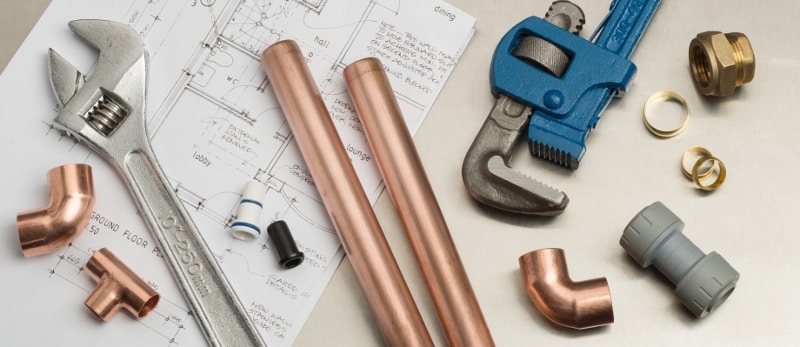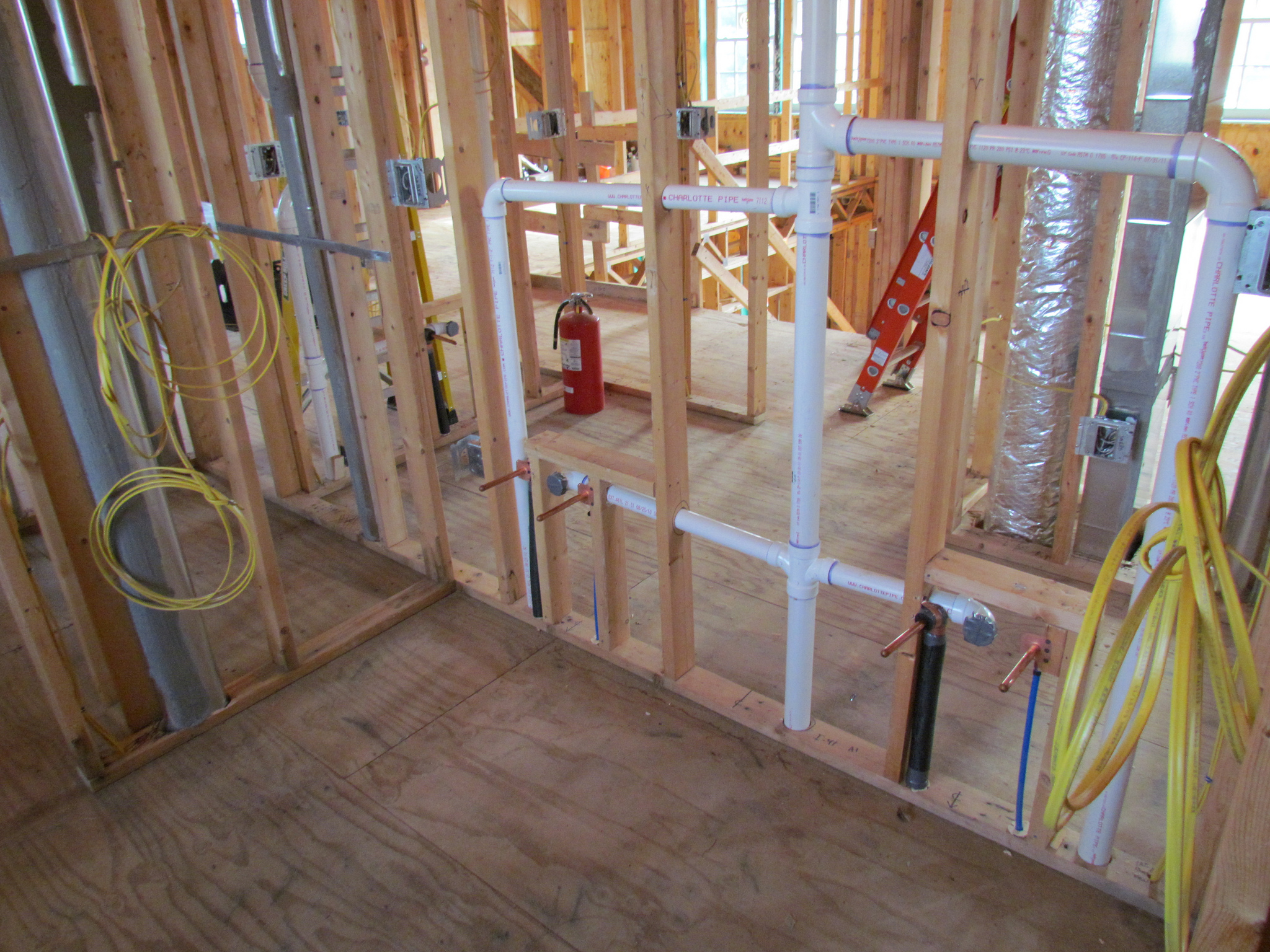The Complete Guide to Your Property's Plumbing System Anatomy
The Complete Guide to Your Property's Plumbing System Anatomy
Blog Article
We have uncovered the article on Exploring Your Homes Plumbing Anatomy directly below on the net and believe it made good sense to talk about it with you on my blog.

Understanding exactly how your home's pipes system functions is essential for each homeowner. From providing tidy water for drinking, food preparation, and showering to safely getting rid of wastewater, a well-kept pipes system is essential for your family members's wellness and comfort. In this thorough guide, we'll discover the elaborate network that composes your home's pipes and offer suggestions on maintenance, upgrades, and managing typical issues.
Introduction
Your home's pipes system is more than simply a network of pipelines; it's a complicated system that guarantees you have access to clean water and reliable wastewater removal. Understanding its parts and exactly how they work together can help you avoid expensive repair services and make sure every little thing runs efficiently.
Basic Parts of a Pipes System
Pipes and Tubing
At the heart of your pipes system are the pipelines and tubing that bring water throughout your home. These can be constructed from different materials such as copper, PVC, or PEX, each with its advantages in regards to longevity and cost-effectiveness.
Fixtures: Sinks, Toilets, Showers, etc.
Components like sinks, bathrooms, showers, and tubs are where water is utilized in your house. Recognizing exactly how these fixtures link to the plumbing system helps in detecting issues and planning upgrades.
Valves and Shut-off Factors
Shutoffs control the flow of water in your plumbing system. Shut-off valves are vital throughout emergencies or when you need to make repair work, allowing you to isolate parts of the system without disrupting water flow to the whole residence.
Water Supply System
Main Water Line
The main water line links your home to the local water system or a personal well. It's where water enters your home and is dispersed to numerous components.
Water Meter and Stress Regulatory Authority
The water meter measures your water use, while a stress regulatory authority makes sure that water flows at a risk-free pressure throughout your home's plumbing system, avoiding damage to pipes and fixtures.
Cold Water vs. Hot Water Lines
Comprehending the distinction between cold water lines, which supply water directly from the main, and hot water lines, which lug warmed water from the hot water heater, helps in fixing and preparing for upgrades.
Water drainage System
Drain Pipeline and Traps
Drain pipes bring wastewater away from sinks, showers, and bathrooms to the sewer or septic tank. Catches protect against sewage system gases from entering your home and likewise catch debris that can create obstructions.
Air flow Pipes
Ventilation pipes permit air right into the drain system, preventing suction that can slow down water drainage and trigger catches to empty. Appropriate ventilation is essential for keeping the stability of your pipes system.
Significance of Correct Drainage
Making certain proper drain prevents backups and water damages. Frequently cleansing drains pipes and preserving traps can protect against expensive repairs and prolong the life of your plumbing system.
Water Heater
Types of Hot Water Heater
Water heaters can be tankless or standard tank-style. Tankless heating units warmth water on demand, while containers keep heated water for immediate usage.
How Water Heaters Attach to the Plumbing System
Understanding just how water heaters attach to both the cold water supply and warm water distribution lines aids in identifying concerns like inadequate hot water or leakages.
Upkeep Tips for Water Heaters
Routinely purging your water heater to get rid of debris, checking the temperature level settings, and examining for leakages can prolong its life-span and enhance power efficiency.
Typical Pipes Issues
Leakages and Their Causes
Leakages can occur because of maturing pipes, loosened installations, or high water pressure. Addressing leaks without delay prevents water damages and mold growth.
Blockages and Clogs
Clogs in drains pipes and toilets are commonly caused by flushing non-flushable products or a build-up of grease and hair. Utilizing drainpipe screens and bearing in mind what goes down your drains can avoid obstructions.
Signs of Plumbing Troubles to Watch For
Low water stress, slow drains, foul odors, or abnormally high water bills are indications of prospective pipes troubles that need to be resolved promptly.
Pipes Maintenance Tips
Routine Assessments and Checks
Arrange yearly pipes assessments to capture concerns early. Search for indications of leaks, rust, or mineral accumulation in faucets and showerheads.
DIY Maintenance Tasks
Basic jobs like cleaning faucet aerators, checking for toilet leaks using dye tablet computers, or protecting subjected pipes in cold climates can prevent major pipes concerns.
When to Call a Specialist Plumbing Professional
Know when a plumbing issue needs expert knowledge. Attempting complex repairs without appropriate understanding can result in more damage and greater fixing prices.
Updating Your Plumbing System
Reasons for Updating
Upgrading to water-efficient fixtures or changing old pipelines can enhance water high quality, reduce water expenses, and enhance the value of your home.
Modern Plumbing Technologies and Their Benefits
Explore modern technologies like clever leak detectors, water-saving toilets, and energy-efficient hot water heater that can conserve money and minimize environmental influence.
Expense Factors To Consider and ROI
Determine the in advance costs versus lasting cost savings when thinking about plumbing upgrades. Several upgrades spend for themselves with minimized utility costs and fewer repair work.
Environmental Influence and Conservation
Water-Saving Fixtures and Devices
Installing low-flow taps, showerheads, and bathrooms can considerably reduce water use without compromising performance.
Tips for Reducing Water Use
Easy routines like repairing leakages quickly, taking much shorter showers, and running full loads of laundry and meals can save water and lower your energy bills.
Eco-Friendly Plumbing Options
Consider lasting plumbing products like bamboo for flooring, which is durable and green, or recycled glass for counter tops.
Emergency situation Preparedness
Actions to Take During a Pipes Emergency situation
Know where your shut-off valves are located and just how to turn off the water in case of a burst pipe or significant leak.
Value of Having Emergency Get In Touches With Handy
Keep call information for local plumbings or emergency situation services conveniently available for fast reaction during a pipes dilemma.
Do It Yourself Emergency Fixes (When Suitable).
Short-lived fixes like utilizing air duct tape to patch a dripping pipeline or placing a container under a trickling faucet can lessen damages until an expert plumbing professional shows up.
Verdict.
Comprehending the anatomy of your home's plumbing system empowers you to maintain it efficiently, saving time and money on repair work. By complying with normal upkeep routines and staying notified concerning modern-day plumbing innovations, you can ensure your plumbing system operates effectively for several years to come.
Exploring Your Homes Plumbing Anatomy
Water Supply System
Main Water Line: This is where water enters your home from the municipal supply or a private well.
Water Meter: Typically located near where the main water line enters the property, it measures the amount of water used.
Shutoff Valve: It s crucial to know where this is in case of emergencies. It allows you to turn off the water supply to the entire house.
Pipes and Fittings: These distribute water throughout your home. Materials can include copper, PVC, or PEX.
Drain-Waste-Vent (DWV) System
Drains: Located in sinks, showers, and tubs, these carry wastewater away.
Traps: U-shaped pipes under sinks that hold standing water, blocking sewer gases from entering the home.
Vents: Pipes that lead from the DWV system to the outside, preventing vacuum formation and allowing gases to escape.
Sewer Line: Carries all wastewater from the home to the municipal sewer system or a septic tank.
Fixtures and Appliances
Sinks, Toilets, and Showers
Dishwashers and Washing Machines
Water Heaters
Maintenance Tips
Regularly check for leaks in exposed pipes and around fixtures.
Inspect the water heater annually for signs of wear.
Clean drains and traps to prevent clogs and odors.
Know how to shut off water to individual fixtures.
When to Call a Professional
Major leaks or burst pipes
Installation of new pipes or fixtures
Septic tank issues
Remodeling projects that involve plumbing changes
Conclusion
Understanding the anatomy of your home's plumbing is key to maintaining a functional and efficient system. Regular checks and knowing when to call in the experts can save you time, money, and stress.
https://www.mavyn.com/blog/exploring-your-homes-plumbing-anatomy

Exploring Your Homes Plumbing Anatomy
Water Supply System
Drain-Waste-Vent (DWV) System
Fixtures and Appliances
Maintenance Tips
When to Call a Professional
Conclusion
Understanding the anatomy of your home's plumbing is key to maintaining a functional and efficient system. Regular checks and knowing when to call in the experts can save you time, money, and stress.
https://www.mavyn.com/blog/exploring-your-homes-plumbing-anatomy
I am just very enthusiastic about and I am assuming you enjoyed the new page. Enjoyed reading our piece of writing? Please quickly share it. Let another person check it out. We recognize the value of your readership.
Book Today Report this page